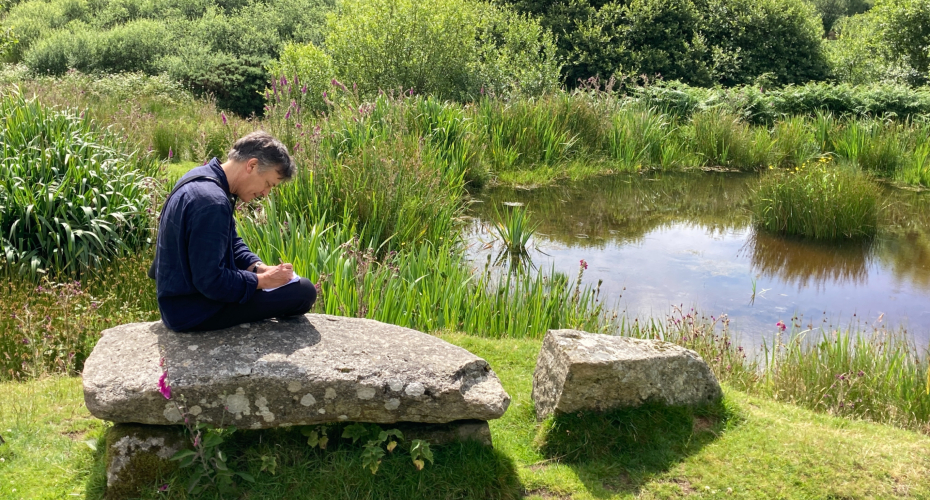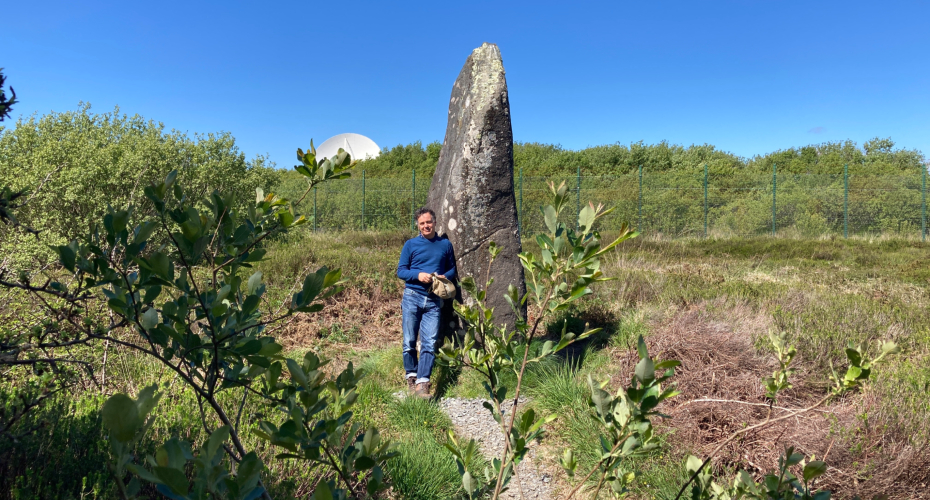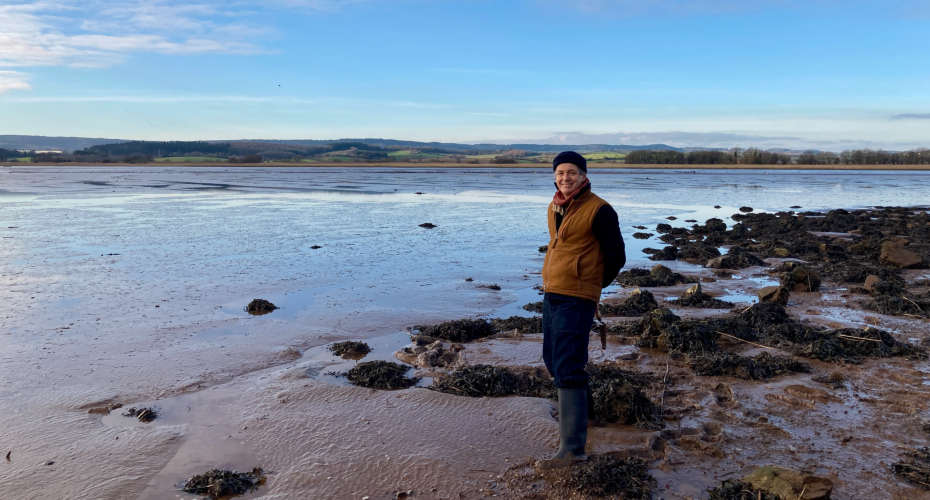A new film series has been launched that highlights the fragile nature of some of the South West's most iconic landscapes and the steps being taken to protect and preserve their biodiversity.
The six films, which will be released weekly, are the result of a collaboration between Natural England's Protected Site Strategies (PSS) Research and Development Programme and the RENEW Biodiversity project at the University.
The films all feature the University's Professor John Wedgwood Clarke as he explores protected sites in Devon, Cornwall and Somerset, and composes poetry in response to what he finds.
The first, launched today on YouTube, is set at Kynance Cove on the Lizard Peninsula, with further sites to be featured including the Exe Estuary and Westhay Moor.
"The South West's diverse and beautiful landscapes have been the source of great joy for so many people and have inspired writers and artists over time," said Professor Clarke, of the Department of English and Creative Writing. "But take a closer look and you realise how fragile many of our ecosystems have become and the lengths to which our agencies and charities have to go in order to conserve their biodiversity.
"I hope these films, and the visual and verbal poetry they contain, inspire people to explore this beautiful part of the world and think about how they can support, in whatever way they can, the work the goes in to helping people and nature thrive together in these special places."

Each film, created by Plymouth-based filmmaker Simon Willis, includes two short poems, specially written by Professor Clarke. The films celebrate the beauty and diversity of nature on the sites and the key achievements and projects that have restored habitats and species and are successfully tackling environmental change and impacts resulting from human activities.
The aim of future Protected Site Strategies will be to ensure the root causes of environmental issues - often driven by factors beyond the sites themselves - are addressed in ways that guarantee wildlife thrives on those sites, while helping nature recovery beyond their boundaries. All six of the Protected Sites chosen for the films are Sites of Special Scientific Interest and Habitat Sites.
David Burton, Natural England's Principal Officer for the Protected Site Strategies Implementation and Development programme, said: "We supported the production of the films to research how creative media can help re-set the relationships between people and nature within the framework of Protected Site Strategies. The approach is to educate and highlight the need for nature recovery to everyone.

"Too often the environment sector has failed to communicate the plight of biodiversity in accessible, positive and thought-provoking ways. For Protected Site Strategies to realise the ambition we have set for them, resetting the relationships between nature and people in ways that build a resilient future for all, we need to harness the power of creative channels for our call to action. John, Simon, and the rest of the team have created inspirational stories through film and poetry to help set our first few Protected Site Strategies on their way."
Filmmaker Simon Willis added: "It's been a privilege to work with all the nature reserves and John. The human effort that goes into keeping them thriving for wildlife is remarkable. I hope our images and John's words encourage people to look beyond the picture postcard and really value the wildlife that makes the South West such a great place to visit."

RENEW (Renewing biodiversity through a people in nature approach) is a collaboration between the University and the National Trust, funded by the Natural Environment Research Council (NERC). It also partners with major conservation bodies like the RSPB and Wildlife Trusts.
Professor Rosie Hails, Director of Science & Nature at the National Trust, said: "We know that for people to protect nature and our fragile ecosystems, they have to care for it first. By using poetry and creating these films we aim to bring the beauty of these six south-west locations into their homes and onto their mobile devices, and to inspire them to visit and to help look after these special places."







